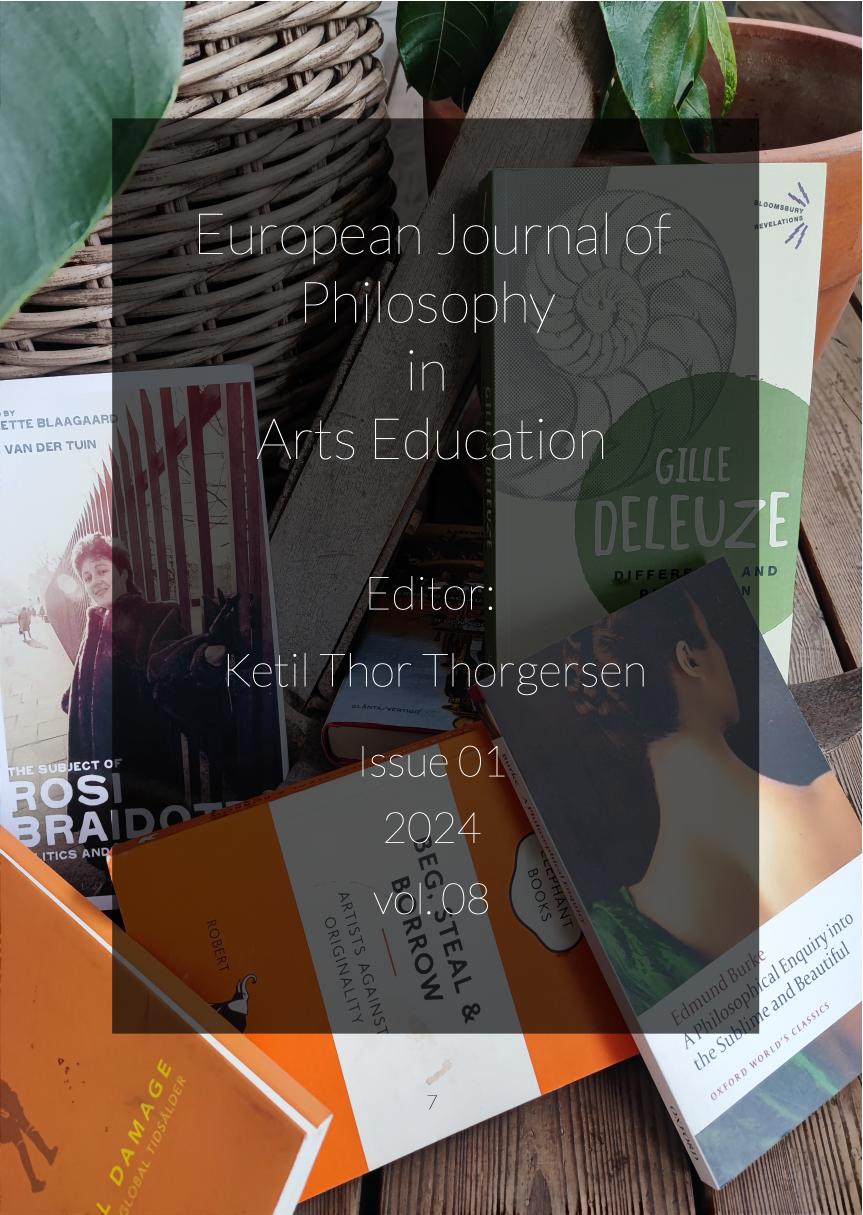Editorial
Tenth issue of the European Journal of Philosophy in Arts Education
Abstract
EJPAE is finally coming out with the tenth issue after more than a year of rest. Why this absence? EJPAE is more or less a one-man show with me, the editor in chief, doing most of the work. Since EJPAE is unpaid voluntary work (as much work in academia is), the editorial work suffers when I have too many other things in my life. I have hade the blessing of becoming a father to a baby boy which has taken up most of my extra time, but as he is now 2,5 years old, time is slowly getting available again. I am so happy to be able to present this fantastic issue comprising of three articles from different art forms and practices.
The first article is based on an experiment and a curiosity: What would happen if the teacher students were allowed to own their own learning processes in a museum context? Nikonanou, Panagiotis, Moraitopoulou and Viseri from Greece reports from an exiting, developing and challenging time where the ideas of the commons are being tested against what is common – what is usual and expected. In the article Commoning the teaching of art in a museum context: SMOOTH reflections, the teachers experience that their roles are challenged as they attempt to hand over responsibility to the students. The teacher training academia questions the usability of a process with no predefined outcome. Towards the end of the article the authors develops a suggestion for a framework for an education of the commons in a museum-higher education context.
Our second article, ‘Dido’s Lament’, a Lament for our Dying Planet? by Inga Marie Nesmann-Aass, offers a compelling re-interpretation of Purcell’s famous aria. Set against the backdrop of Annie Lennox’s modern performance during the pandemic, Nesmann-Aass connects this 17th-century piece to the global climate crisis, reflecting on the ways historical music can speak to contemporary crises. The article weaves together embodied performance, environmental activism, and pedagogical applications, asking us to rethink how we relate to music from the past in the context of today’s urgent challenges.
Finally, in Abstraction through the Kaleidoscope: Playful Concept Creation with Irma Salo Jæger, Heidi Marjaana Kukkonen invites us into the creative world of abstract art through a philosophical and playful exploration with Finnish-Norwegian artist Irma Salo Jæger. Kukkonen reflects on the potential of abstraction as a tool for education, where the act of playing with abstract ideas opens up new perspectives and disrupts conventional thinking. Her approach, informed by new materialist theory, reveals how abstraction is not only a philosophical concept but also a way to engage deeply and actively with art.
This issue exemplifies the richness of art in education, with each article offering unique perspectives on how we learn through artistic practices. I am proud to share this with you and hope it sparks as much curiosity and reflection for you as it has for me.
Ketil Thor Thorgersen
Editor in Chief Stockholm October 4th 2024

Downloads
Published
Issue
Section
License
Copyright (c) 2024 Ketil Thor Thorgersen

This work is licensed under a Creative Commons Attribution 4.0 International License.
EJPAE provides immediate open access to all its published content. Users do not need to register or pay to read content.
https://creativecommons.org/licenses/by/4.0/
Authors of content published in European Journal of Philosophy in Arts Education (EJPAE) retain the copyright to their works. Content is free to be used by anyone as long as you "[...] give appropriate credit, provide a link to the license, and indicate if changes were made. You may do so in any reasonable manner, but not in any way that suggests the licensor endorses you or your use." and "No additional restrictions — You may not apply legal terms or technological measures that legally restrict others from doing anything the license permits." (from the Creative Commons licence agreement)
EJPAE does not charge any author or publication fees.
Authors are encouraged to deposit the final published version of their article for self-archiving (author's personal website) and/or archiving in an institutional repository immediately upon publication.




